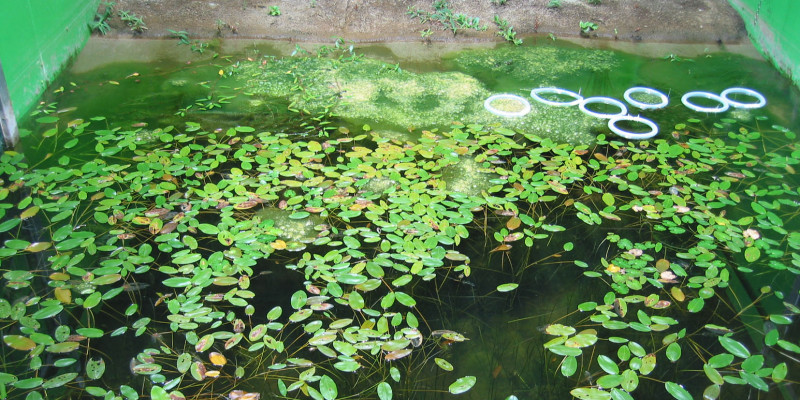Effect study of the herbicide Metazachlor in stream and pond mesocosms
In June 2003, an experiment of the effect of Metazachlor on aquatic populations was carried out in the indoor stream and pond mesocosms by the Umweltbundesamt. Metazachlor, a herbicide, belongs to the family of alpha-chloracetamides and is used, among other things, to keep grasses and weeds in the cultivation of rape, cabbage and soy beans under control. Even when applied in the appropriate manner it can still enter surface waters by runoff or aerial drift and can come in contact with aquatic plants and algae.
For this reason, the concentrations of 5, 20, 80, 200 and 500 µg/l Metazachlor were dosed into 5 pond and 5 stream systems, respectively, in order to determine a concentration-effect relationship especially for aquatic plants under semi-natural conditions. Three further mesocosms were used as control systems. Both in the ponds and in the streams, it was demonstrated that one single herbicide dosage already had a distinct, concentration-related effect after a few weeks (Fig.1 and 2). Some effects were detected at concentrations lower than the threshold values determined in laboratory experiments, thus confirming the suitability and significance of mesocosm studies.



